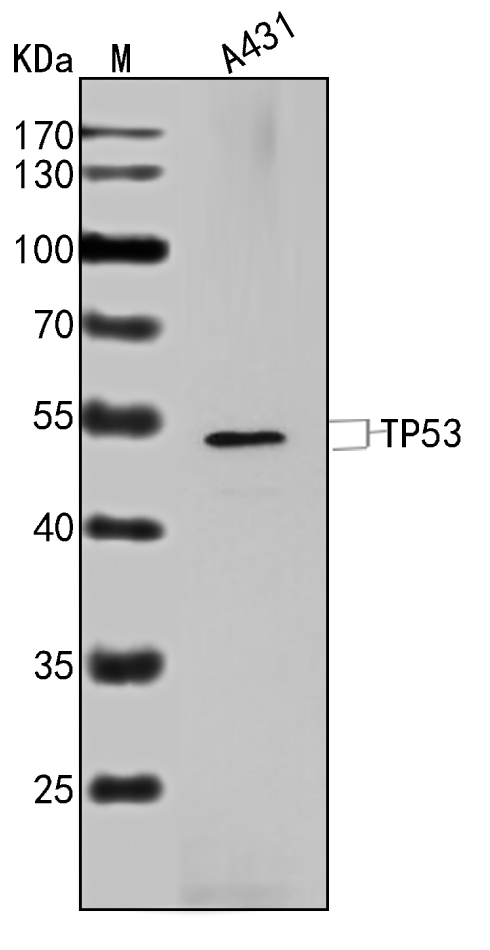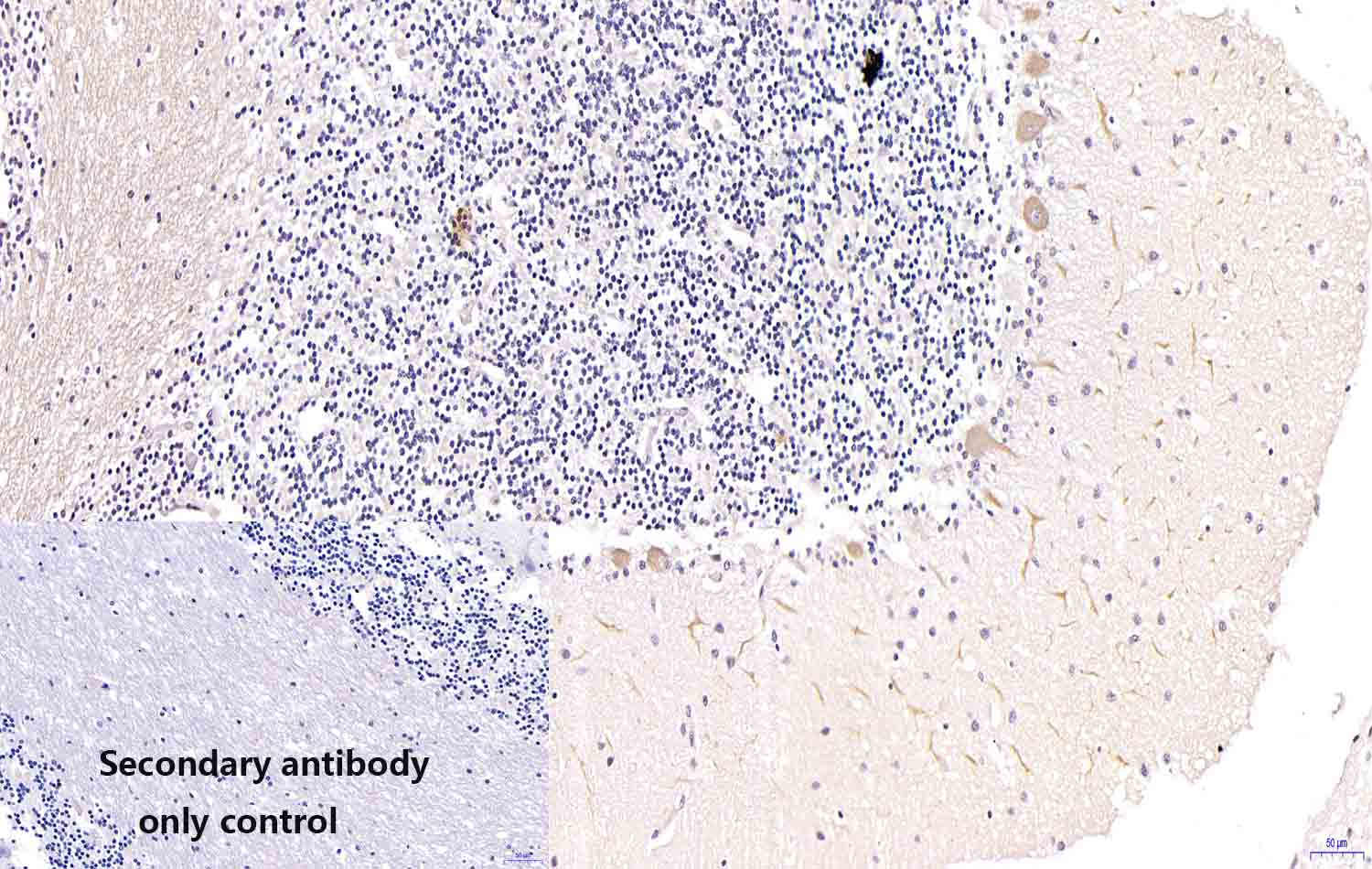
产品名称:Anti-TP53 Antibody, Mouse Monoclonal, C4T
克隆号:C4T
抗体亚型:/
经验证的应用:/
交叉反应:Predict reacts with: Human/Mouse/Rat
特异性:/
免疫原:A synthetic peptide of human TP53
制备方法:Produced in mouse immunized with TP53, and purified by antigen affinity chromatography.
来源:Monoclonal Mouse IgG
纯化:Immunogen affinity purified
缓冲液:Supplied in PBS, 50% glycerol and less than 0.02% sodium azide, PH7.4
偶联物:Unconjugated
浓度:Liquid
运输方式:This antibody is shipped as liquid solution at ambient temperature. Upon receipt, store it immediately at the temperature recommended.
储存条件:This antibody can be stored at 2℃-8℃ for one month without detectable loss of activity. Antibody products are stable for twelve months from date of receipt when stored at -20℃ to -80℃. Preservative-Free. Avoid repeated freeze-thaw cycles.
图片:
Figure1.Western blot analysis of extracts of various lane1 A431, using TP53 antibody (MA00116HuM10-C4T) at 5ug/ml Secondary antibody: HRP Goat Anti-Rabbit IgG (H+L) at 1:20000 dilution. Lysates/proteins: 25ug per lane.Blocking buffer: 3% nonfat dry milk in TBST. Detection: ECL Basic Kit . Exposure time: 3min.
Figure2.Immunohistochemistry (Formalin/PFA-fixed paraffin-embedded sections) analysis of monkey cerebellum、monkey epididymis sections labelling TP53 with purified MA00116HuM10-C4T at 30ug/ml dilution . Heat mediated antigen retrieval was performed using Heat mediated antigen retrieval using citrate buffer (PH6.0). Tissue was counterstained with Hematoxylin. Mouse specific IHC polymer detection kit HRP/DAB secondary antibody was used at 1:2000 dilution. PBS instead of the primary antibody was used as the negative control.
别称:TP53, LFS1, TRP53, Li-Fraumeni Syndrome, Cellular tumor antigen p53, Antigen NY-CO-13, Phosphoprotein p53, Tumor suppressor p53
背景信息:p53 is well known for its key role as a tumor suppressor protein. It is 393 amino acids (aa) in length with a predicted molecular weight of 44 kDa. It belongs to the p53 family that also includes p63 and p73. Structurally, p53 is characterized by an N-terminal transactivation domain, central DNA-binding and oligomerization domains, and a C-terminal regulatory domain. It is thought to exist as a homotetramer, and it exhibits approximately 72% and 76% aa identity with its mouse and rat orthologs, respectively. Mutations in the p53 gene are one of the most frequent genomic events accompanying oncogenic transformation. p53 responds to signals such as DNA damage or cell stress primarily through its actions as a transcription factor. Among its gene targets are a range factors that promote DNA repair mechanisms or apoptosis including cell cycle regulatory proteins and members the Bcl-2 family. Because of its critical role in genomic homeostasis, p53 activities are tightly regulated by a network of protein-protein interactions, microRNAs, and a range of post-translational modifications, including phosphorylation, acetylation, methylation, and ubiquitination. A widely studied regulator is Murine Double Minute 2 (MDM2). MDM2 is known to suppress p53 activity through direct binding or through its actions as a Ubiquitin ligase (E3) that catalyzes p53 ubiquitination and proteasome-mediated degradation.
全称:Cellular tumor antigen p53 (TP53)



